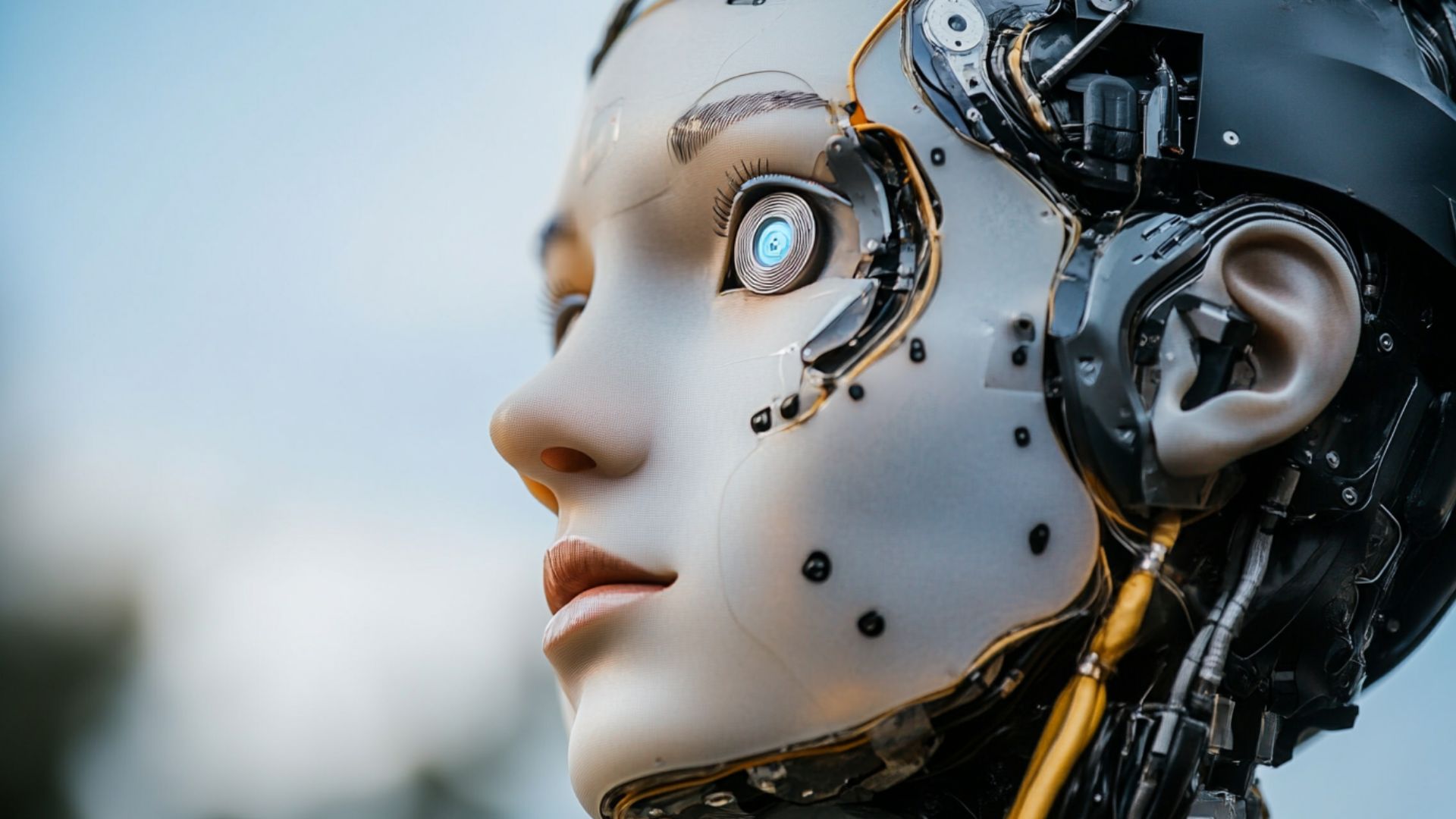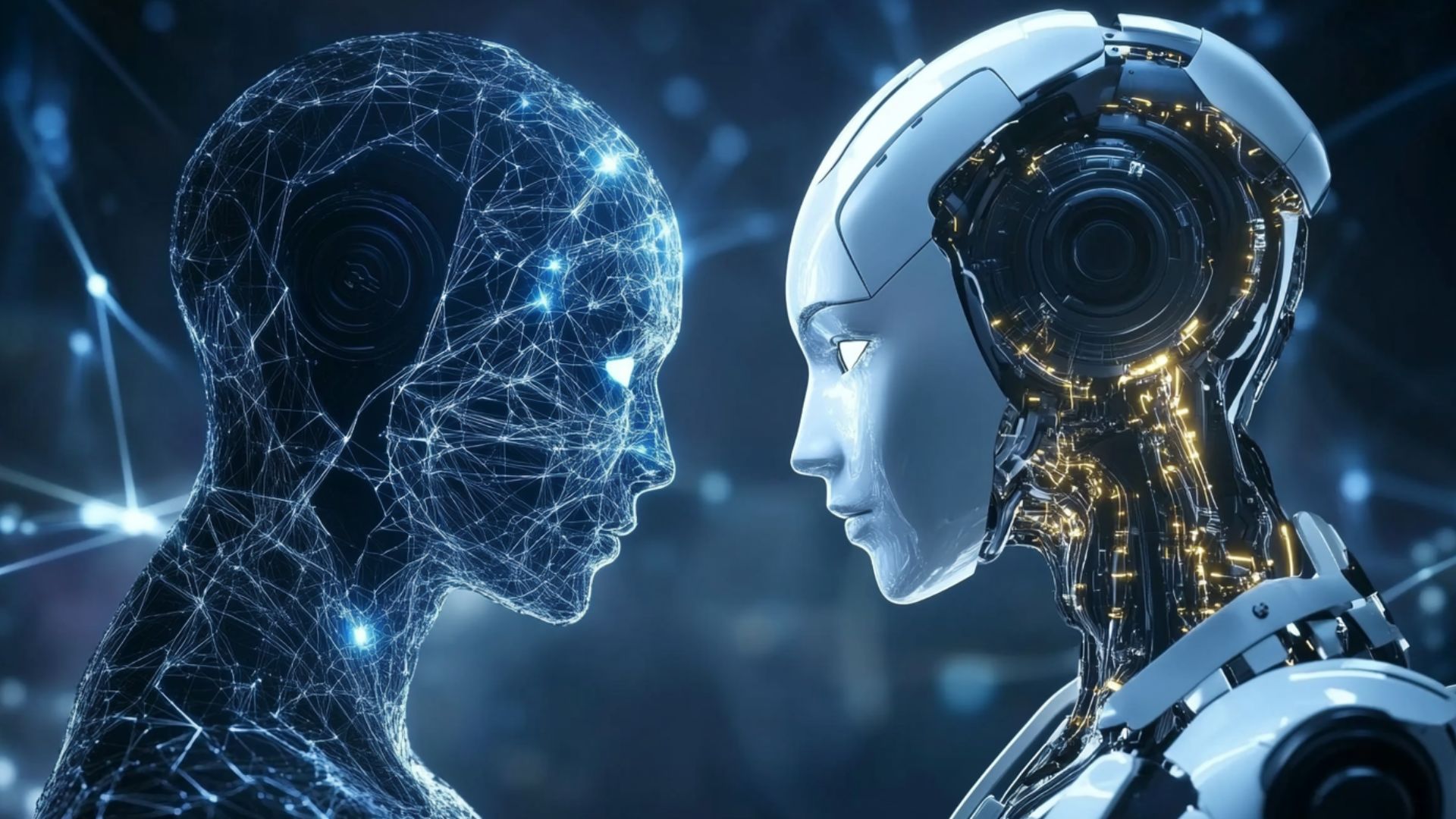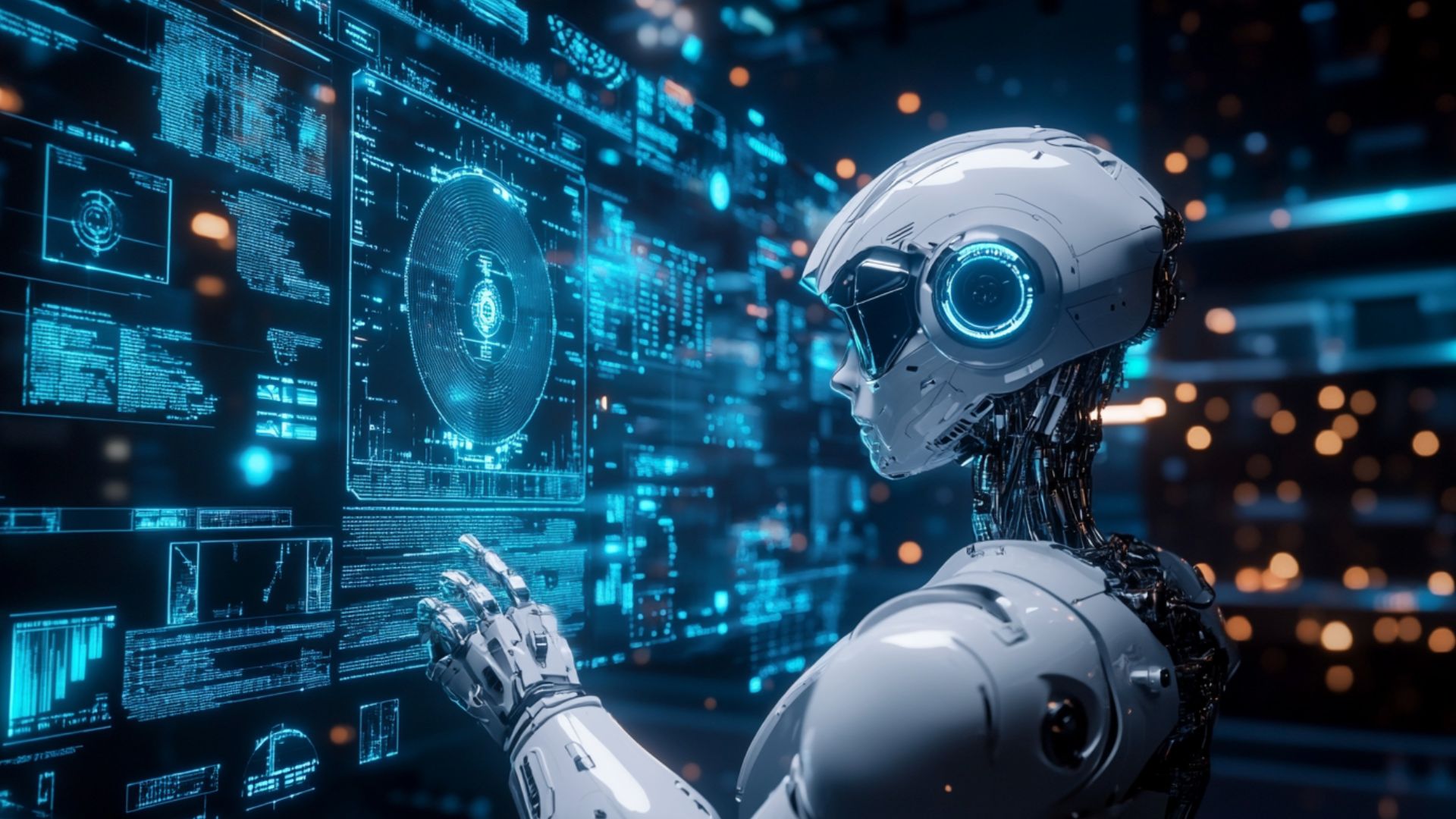What Does an AI Trainer Do?

In the fascinating world of artificial intelligence, there's an exciting new development: the AI trainer. But this isn't a human job – it's an AI system designed to train other AIs! These smart programs are revolutionizing how we create and improve AI systems. From chatbots to complex decision-making algorithms, AI trainers are the digital teachers shaping the future of AI.
But what is an AI trainer exactly? Think of it as a super-smart computer program that teaches other AI programs. It helps AI systems learn, improve, and become smarter over time. It's like having a robot teacher for robot students!
Role and Responsibilities of AI Trainers
The function of an AI data trainer is both complex and vital. These systems perform multiple tasks simultaneously and operate 24/Let's peek into their digital world and see what they do. A typical day in the life of an AI trainer might look like this:
- Continuously: Process and clean incoming data streams
- Hourly: Update training algorithms based on performance metrics
- Every few minutes: Run training sessions and analyze results
- Constantly: Collaborate with other AI systems for problem-solving
- In background: Update its systems with the latest AI research and trends
First and foremost, AI trainers are data processors. They collect, clean, and organize vast amounts of data. This data is the fuel that powers AI learning. AI systems would be like students trying to learn from jumbled textbooks without good data.
Once they have the data, AI trainers use it to teach other AI models. They might show AI thousands of pictures of cats, helping it learn what a cat looks like. Or they could feed it millions of sentences to help it understand human language.
But their job isn't just about feeding data. AI trainers also need to check the AI's work. They analyze the AI's outputs and identify where it's making mistakes. Then, they automatically adjust the training to help the AI improve.
Here's an interesting application: some AI trainers specialize in developing chatbots. These AI chatbot trainers help create the friendly virtual assistants we chat with online. They teach the bots how to understand questions and give helpful answers.
AI trainers also work in conjunction with other AI systems. They might collaborate with data analysis AIs to design better training methods. They communicate with implementation AIs about deploying trained models in real products. It's a very interconnected digital ecosystem!
Training and Development Focus
So, how is AI trained by these digital trainers? It's not as simple as showing an AI a bunch of pictures or text. AI trainers use sophisticated algorithms to help AI systems learn effectively. Here are the main approaches to AI training:
- Supervised Learning
- Unsupervised Learning
- Reinforcement Learning
- Semi-supervised Learning
- Transfer Learning
Let's take a closer look at the first three:
Supervised Learning:
- AI trainer provides labeled data to the learning AI
- The learning AI recognizes patterns and learns to categorize
- Ideal for classification and prediction tasks
Unsupervised Learning:
- AI trainer provides unlabeled data
- The learning AI finds patterns on its own
- Useful for clustering and anomaly detection
Reinforcement Learning:
- AI trainer creates a reward system
- The learning AI learns through trial and error
- Effective for decision-making and strategy tasks
Real-world training scenarios can be fascinating. For example, an AI trainer might work on teaching an AI to recognize emotions in voices. It would process thousands of voice recordings labeled with the corresponding emotion.
Or consider jobs training AI chatbots. These AI trainers might generate countless mock conversations to teach the chatbot to handle different situations. It's like role-playing but between two AI systems!
Essential Capabilities of AI Trainers
Being an artificial intelligence trainer requires a unique set of capabilities. It's not just about processing data. An effective AI trainer must be part analyst, problem-solver, and innovator. Key capabilities of AI trainers include:
- Advanced data analysis algorithms
- Machine learning model generation
- Deep understanding of various AI architectures
- Sophisticated problem-solving algorithms
- Effective data communication protocols
- Iterative learning capabilities
- Creative solution generation
First and foremost, AI trainers need powerful analytical capabilities. They must be able to process complex data sets and identify subtle patterns. They also need robust problem-solving algorithms to determine why an AI might make mistakes.
Patience, in the form of iterative processing, is another crucial capability. Training AI can be a long process with many iterations. AI trainers need to be designed for long-term, persistent optimization.
Communication capabilities are also vital. AI trainers must often translate complex data insights into formats other AI systems or human operators can understand. They might need to generate clear reports on their training results.
Creativity, in terms of novel solution generation, is important too. Sometimes, AI trainers must develop new ways to teach difficult concepts to AI. It's like inventing new teaching methods for a very unusual student!
Of course, technical capabilities are essential. AI trainers need to be compatible with various programming languages and AI frameworks. They should also have a deep understanding of machine learning concepts and tools.
System Requirements for AI Trainers

Creating an effective AI instructor typically requires a powerful and sophisticated system. Most AI trainers run on high-performance computing clusters or cloud platforms designed for AI workloads. The technical requirements for an AI trainer often include:
- Powerful GPUs or TPUs for parallel processing
- Large amounts of high-speed RAM
- Fast, high-capacity storage systems
- Advanced cooling systems to handle intensive computations
- Robust network infrastructure for data transfer
Many organizations prefer to run AI trainers on specialized AI chips or in cloud environments optimized for AI workloads. These provide the necessary computational power and scalability.
But hardware isn't the only requirement. AI trainers need sophisticated software systems, too. They run on advanced AI frameworks like TensorFlow, PyTorch, or custom-developed platforms.
What's most important is a robust AI architecture. AI trainers need to incorporate various machine learning models, including neural networks, deep learning systems, and natural language processing capabilities. They should also be familiar with a wide range of AI training techniques.
Data handling capabilities are crucial, too. Trainers need to be able to process and analyze massive datasets quickly and efficiently. They should also have strong data cleaning and preparation algorithms.
Statistical and mathematical processing power is a necessary foundation. AI trainers use complex concepts from linear algebra, calculus, and probability. A solid implementation of these areas is essential for understanding and improving AI learning processes.
Emerging Trends in AI Trainer Development
The field of AI is evolving rapidly, as are AI trainers' capabilities. New technologies and techniques are constantly emerging, changing what AI trainers need to be able to do. Here are some of the top trends in AI trainer development:
- Integration of ethical AI principles and responsible AI development
- Specialization in areas like computer vision or NLP
- Increased use of federated learning and edge computing
- More sophisticated meta-learning capabilities
- Integration with other emerging technologies like quantum computing
One big trend is the increasing focus on ethical AI. Many AI trainers now incorporate modules for bias detection and mitigation. It helps ensure that the AIs they train make fair and responsible decisions.
Another trend is the growing focus on specialized AI applications. Some AI trainers are now designed specifically for areas like computer vision or natural language processing. It allows for more efficient and effective training in these specialized domains.
Edge computing is becoming more important, too. Some AI trainers are designed to operate on edge devices, allowing AI training to happen closer to where data is generated.
There's also a trend towards more advanced meta-learning capabilities. It allows AI trainers to learn how to train more effectively over time, becoming more efficient and adaptable.
Staying updated with these trends is crucial for AI trainers. They're often designed with automatic update mechanisms, allowing them to integrate new research and techniques as they emerge. Continuous evolution is key in this fast-paced field!
Performance and Efficiency of AI Trainers
If you're considering implementing an AI trainer system, you might wonder about its performance and efficiency. The good news is that AI trainers can be incredibly powerful and efficient! Here's a general overview of AI trainer performance metrics:
- Data processing speed: Millions of data points per second
- Training speed: Can train simple models in minutes and complex models in hours or days
- Accuracy improvement: Often improves model accuracy by 10-30% compared to traditional methods
- Efficiency: Can run 24/7 without breaks, maximizing productivity
Note: These figures can vary widely based on the specific system and task. Factors that can boost an AI trainer's performance include:
- More powerful hardware (better GPUs, more RAM)
- Optimized algorithms
- Larger and higher-quality training datasets
- Specialization in specific AI domains
- Integration with cloud computing platforms for scalability
Many AI trainers also offer impressive efficiency features. These often include automatic resource allocation, energy-efficient operating modes, and the ability to distribute tasks across multiple systems.
There's also potential for continuous improvement. As AI trainers work, they often learn to become more efficient, optimizing their own processes over time.
It's noteworthy that work-from-home AI training systems are becoming more common. These systems can operate remotely, allowing businesses to leverage powerful AI training capabilities without on-site infrastructure.
Overall, the performance and efficiency of AI trainers are impressive and continually improving. As AI becomes more important in business, these powerful systems will likely become even more capable and efficient.
Applications of AI Trainers

The applications for AI trainers are vast and growing. As AI technology advances, these smart systems are finding uses in more and more areas. Here are some of the key applications of AI trainers:
- Business AI Development
- Scientific Research
- Healthcare Diagnostics
- Financial Modeling
- Autonomous Vehicle Training
- Natural Language Processing
- Game AI Development
Many industries are leveraging AI trainers. Tech companies are obvious users but don't forget about finance, healthcare, retail, etc. Even governments and nonprofits are starting to use AI training systems!
One interesting area is AI bot training. As more businesses use chatbots for customer service, there's a growing need for sophisticated training systems. These AI chatbot trainers help create bots that effectively understand and respond to customers.
For those interested in research, there are exciting applications as an AI model trainer. These systems often work on cutting-edge AI technologies. They might help develop new training methods or work on making AI systems more efficient.
The impact of AI trainers can be far-reaching. Some are used to train AI systems that design new drugs, while others might train AIs that predict financial markets. Some even train AIs that create art or music!
There's also potential for specialization. An AI trainer might be explicitly designed for computer vision tasks or focus on natural language processing. Others might be optimized for training AIs in a particular industry, like finance or healthcare.
The rise of edge computing is opening up new possibilities. Some AI trainers are now designed to work on small, local devices. It allows AI training jobs to happen right where the data is generated, opening up new applications in IoT and mobile devices.
With the advancement of cloud technologies, training AI to work from home systems is becoming more common. It allows businesses to leverage powerful AI training capabilities without extensive on-site infrastructure.
Future Developments in AI Trainers
The future of AI trainers is exciting and full of potential. As AI technology evolves, so will the systems that train them. Let's explore some possible future developments: Steps in the Evolution of AI Trainers:
Increased Autonomy:
- AI trainers may become more self-directed, choosing what to learn and how
- They might identify new areas for AI application independently
Enhanced Creativity:
- Future AI trainers could generate novel training approaches
- They might create entirely new types of AI models
Improved Explainability:
- AI trainers may get better at explaining their decision-making processes
- It could help address the "black box" problem in AI
Quantum Integration:
- As quantum computing advances, AI trainers might leverage quantum algorithms
- It could dramatically speed up training for complex AI models
Emotional Intelligence Training:
- Future AI trainers might be able to train AIs in emotional intelligence
- It could lead to more empathetic and socially aware AI systems
Cross-Domain Learning:
- AI trainers might become better at applying learning from one domain to another
- It could accelerate AI development across various fields
Ethical AI Enforcement:
- Future AI trainers could have robust systems to ensure ethical AI development
- They might automatically detect and correct biases in AI models
Remember, the field of AI is still young and growing. The capabilities of AI trainers are likely to expand in ways we can't yet imagine.
Platforms like Newo.ai are at the forefront of these developments, making AI training more accessible and powerful. These tools can help businesses stay at the cutting edge of AI technology.
In conclusion, AI trainers are transforming how we develop and implement artificial intelligence. These smart systems are the digital mentors shaping the AIs that increasingly influence our daily lives. Their impact is vast and growing, from training chatbots to developing complex decision-making algorithms.
If you're fascinated by AI and its potential, keeping an eye on AI trainer technology is crucial. It offers a window into the future of AI development and application.
As AI continues to evolve, so do the tools for training it. Platforms like Newo.ai are making creating and training AI agents easier than ever. These systems are opening up new possibilities for AI training jobs, even in organizations without extensive AI expertise.Whether you're just starting to explore AI or looking to advance your organization's AI capabilities, the field of AI training offers exciting opportunities. With the right AI training systems, you can harness the power of AI to drive innovation and efficiency in your business. The future of AI is bright, and AI trainers are at the forefront of this technological revolution!


